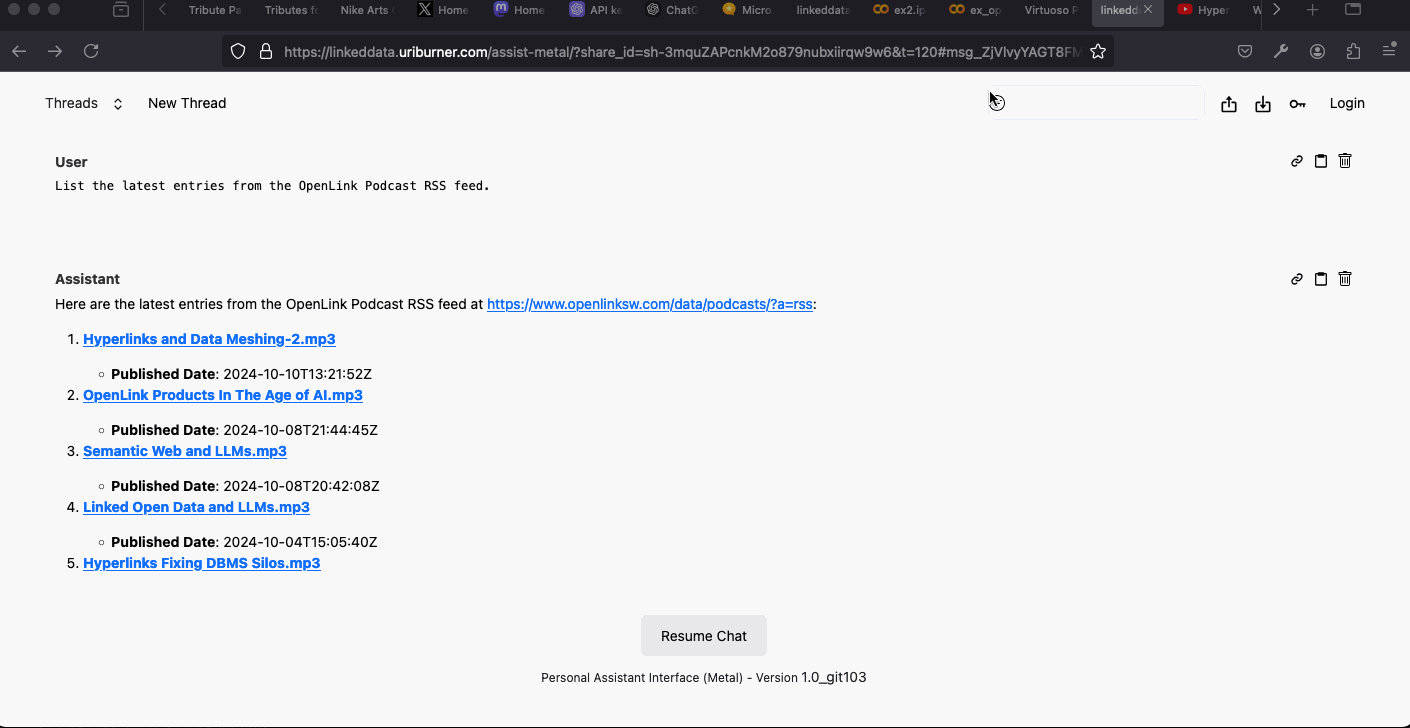Communicating complex, thorny issues to a target audience requires delivering content in their preferred format. For humans, the preferred communication modality typically follows this order: video, audio, and then text. In the age of GenAI, leveraging tools like NotebookLM makes it easier than ever to streamline communication. Here’s a step-by-step guide on how to create and distribute a podcast using NotebookLM:
- Collate notes and topic references (e.g., hyperlinks)
- Feed the collated material into NotebookLM
- Wait a few minutes for NotebookLM to generate a podcast
- Listen to the initial version
- Tweak the material (add or remove content as needed)
- Listen to the revised edition
- If satisfied, add the podcast to an RSS or Atom feed
- Share the feed for subscription by interested parties
As demonstrated in the GIF below, subscribing to the generated RSS or Atom feed can be easily managed by our OPML, RSS, and Atom Reader AI Agent. This dynamic workspace is made possible by recent innovations in LLM-based AI.

Additionally, since people are often hesitant to click on links in content, you can record a video of the podcast playback and upload it to YouTube. This allows you to embed the podcast link in content shared across social media platforms, making it more accessible.
Here’s a practical example of the workflow outlined above in the form of a podcast titled Hyperlinks and Data Meshing Podcast. It showcases how you can communicate complex topics effectively using audio, delivered as a two-person podcast session by industry analysts.